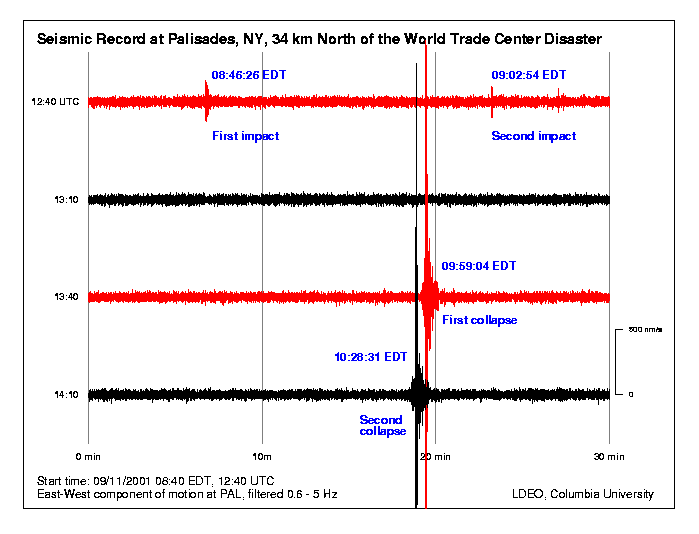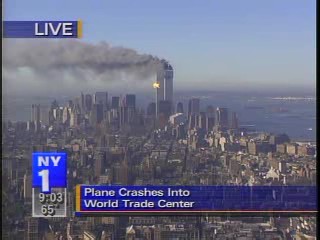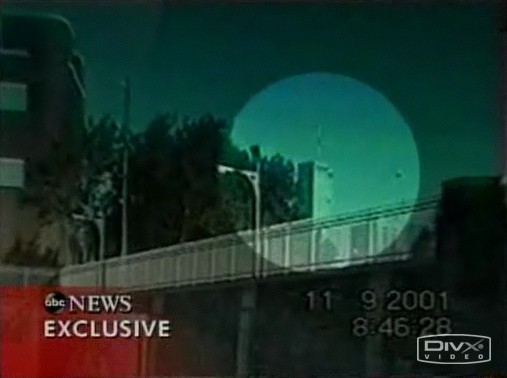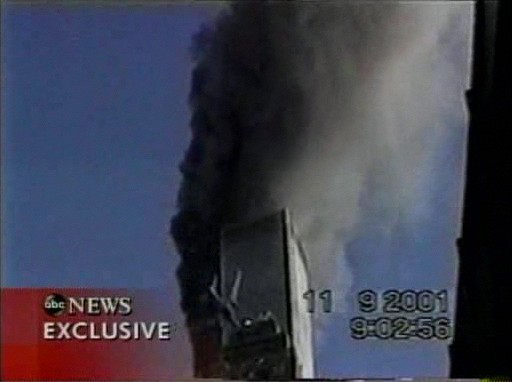|
|
| [Home] [WTC (demolition)] [Seismic Events at the WTC] [Seismic Proof?] |
|
The story... On September 11, 2001, the seismic stations grouped around New York City recorded seismic events from the WTC site, two of which occurred immediately prior to the aircraft impacts upon the Twin Towers. Because these seismic events preceded the collisions, it is clear they were not associated with the impacts and must therefore be associated with some other occurrence. None of the authorities charged with the responsibility for the investigation of the events of 9/11 have proposed a source for these seismic events, nor have they given a valid reason for the difference in times between the seismic events and the aircraft impacts. Only by consideration of the evidence of basement explosions before the aircraft impacts, as experienced by William Rodriquez and 36 others, can an explanation be found for the fact that the seismic stations recorded seismic events originating from the WTC sites prior to the aircraft impacts. It seems unlikely that Middle Eastern terrorists could have overcome the WTC security and managed this kind of high-level, technological coordination. Do the facts presented here, simple and few, raise the possibility of inside involvement in 9/11/01, both before and after the attack? It's based around the following anomaly. In case of the WTC attack, the impacts of the two planes could be determined with an accuracy of about [plus or minus] 2 seconds. Nonetheless, as the paper also points out, the seismic data was reanalysed later and the times did change: ...These [seismic] signals have subsequently been reanalysed by LDEO, working under a contract for the NIST WTC Investigation (Kim, 2005). A reinterpretation of the types of seismic signals received resulted in slightly revised times for the major events. The results of this recent analysis are also included in Table 3-1... Three seconds is a little closer, but not nearly enough to resolve the problem. The Commission’s times are based upon: These appear to be solid claims, yet they raise immediate questions, and perhaps not the ones the authors intended. Take a look at the LDEO seismic chart, for instance:
Note that LDEO are reporting a single seismic event for each impact, not two. Are we to believe that a pre-impact explosion registered at LDEO, even more significantly than the impacts themselves? Further, if there was an explosion of this power, then wouldn't you expect it be reported by rather more people? Here are just two relevant accounts: When the first plane hit the North Tower on about the 90th floor it was nowhere near as dramatic as you would think on the 65th floor, just 25 floors down. There was a definite explosion but it did not sound that bad. ...I heard a loud explosion, which was immediately followed by tremendous building sways and vibrations. As I was thrown out of my chair, I immediately thought that this was an earthquake, but still thinking rationally, I thought that it was abnormal since there are no earth-quakes in NYC, especially of this magnitude. I remember thinking that the building felt like it was going to collapse from this initial explosion. If these accounts are describing the plane impacts, then what we're being asked to believe is that they didn't register seismically to any significant degree, despite causing effects comparable to an earthquake. And if they're describing a pre-collapse explosion, then we have to believe that they missed the plane hitting ten or more seconds later. This makes no sense to us. Of course there’s no reason our inexpert and unqualified guessing should carry any weight with you, but perhaps a closer examination of the data will reveal a more convincing explanation of what’s going on. ASR radar normally records data approximately every 4½ seconds, but ARSR data is only recorded every 12 seconds... Although "Seismic Proof" earlier portrayed the radar times as accurate "to the second", the NTSB paint a very different picture. The radars didn't all use synchronised times, for instance, and in this case there were large offsets to be considered. An "effort" had to be made to account for the "error" in each radar set. And as they point out, ASR radar doesn't provide continuous data anyway: records are made "approximately every 4½ seconds". A time correlation was made between the RADES radar data, NTAP radar data, ASR radar data sets, FDR data (when available), and Air Traffic Control (ATC) radio transmission transcript data. Times indicated with the USAF RADES radar data were used as the reference time, and the FDR and ATC clocks were adjusted accordingly. Times given in this report are in 24-hour format, in the form HH:MM:SS Eastern Standard Time (EST). The FDR records information relative to an elapsed time in seconds, and are assigned a time of day using the technique outlined below. This is an impressive-sounding process, however any uncertainty in the resulting times is not spelled out. The NTSB didn’t have flight data recorder (FDR) data for Flight 11 and 175, either, so their calculations would not have this additional extra check. Presumably that would increase any resulting uncertainty in times for those flights, but to what? We don’t know. And this matters, so if you’ve not done so already, go read the entire document above to make sure you’re getting the whole picture. Many of the news broadcasts on September 11, 2001, had the current time imprinted on the screen. These imprints are known in the industry as "bugs". As these broadcasts were timed, it became apparent that there were small differences between times for the second aircraft impact based on these bugs and the time used as the basis for the database. Checks with several broadcasters indicated that the bugs should be quite close to the actual time because the clocks used as sources for the bugs are regularly updated from highly accurate sources, such as geopositioning satellites or the precise atomic-clock-based timing signals provided by NIST as a public service. Careful checks showed small time differences between different video recordings, but these were generally less than 1 s. These small discrepancies were likely due to variations in transmission times resulting from the different pathways that the video signals took to the sites where they were recorded. Based on four independent video recordings, the actual time of the second aircraft impact was determined to be 9:02:59 a.m., or 5 s later than the time assigned in developing the database. The estimated uncertainty is 1 s. This puts the impact five seconds after the original LDEO time, but only two seconds away from the revised time, within the combined margin of error. No support here for an impact as late as the Commission time of 9:03:11. Some may object to this analysis, especially as it’s come from NIST. If you don’t trust their report, then why believe them on this?
See the station’s footage here (Real format) View our snipped clip here (AVI with XViD codec) Their clock had changed over to 9:03 around half a second before the explosion began to be visible. When you consider that the explosion didn’t occur immediately on impact, and there could be a delay in broadcast anyway (the time it takes a video frame to be processed, leave the camera, and be sent to the studio before the time stamp is added), NIST’s 9:02:59, with a one second uncertainty, seems very close. There are those who suggest the broadcast footage has been faked, too, so perhaps this isn’t convincing enough. But that’s not a problem: we have still other sources available. In August 2006, for example, a large number of 911 and other emergency calls from September 11th were released to the public. Each call was given a start time. The second call in the audio file for “Bronx Master Channel #3, Voice Alarm Telephone” is said to start at 09:02:54, and approximately 4.5 seconds into the call you hear shouting in the background, and the caller says there’s been a “major explosion in the second building”. (The list of all available files is here, the MP3 file we’re referring to is here, our snipped version of the second transmission only is here.) Plainly we have an accuracy issue here: how much can we trust these times? Presumably emergency transmissions are more likely than most to be used in legal cases, and so would have to be timed very precisely, but that’s just a guess on our part, and they don’t say how accurate the times are. Further, while this time looks potentially very close to NISTs 9:02:59, other calls are a little further out. The one in this file appears to show reaction from behind the caller at around 9:03:04 to 05, for instance. Of course the speed of reaction from the viewers will depend on the coverage they’re watching: the above NY1 image, for instance, isn’t obviously a plane and it may have taken a moment for viewers to react, but if others watched a live shot where Flight 175 was visible then the story may have been different. In any event, neither call appears to support the Commission’s 9:03:11 time. This remains an “official” source, though. If you distrust NIST, and the TV networks, then maybe you’ll think these tapes might be faked, too. So it’s just as well there’s an independent source we can use by way of comparison. On 9/11 Pavel Hlava was riding through New York, videotaping the WTC, when he briefly caught the first impact. After passing through the Brooklyn Battery Tunnel he continued filming the burning tower, and caught the second impact, too. But most important of all, there's a timestamp running throughout the footage. Here's what it shows. Flight 11 has just penetrated the WTC here: Hlava has the time at 8:46:28 (actualy impact could be a second earlier). Download the video from this site, or grab our hosted copy here.
The second video has the precise point of impact concealed, but these two images should give you an idea.
 Here the impact is around 9:02:57, within half a second or so. Confirm this for yourself by downloading a copy of the video from another site, or take a look at our copy here. (There’s more background in a New York Times Flash applet, which we’ve also archived here.) For Flight 11, then, LDEO originally estimated an impact time of 8:46:26; revised it to 8:46:29; Havel gives us 8:46:28. And for Flight 175, LDEO give us 9:02:54, and revised it to 9:02:57, while Havel gives us 9:02:57, the Bronx Channel #3 call gives us something before 9:02:58.5, and the NY1 clip says something before 9:02:59.5; NISTs “TV time” is 09:02:59. The Havel timings have a fair degree of uncertainty, so please check the videos for yourself, but they do seem to match up with the LDEO very well. The way Havel’s shot of the second impact agrees with TV recordings and emergency call time further tells us that his camera clock wasn’t far from the real time. Combining these factors makes a strong case for the seismic events corresponding to the impact times, just as LDEO reported. We are left with a mystery in the apparent inaccuracy of the “FAA radar data and air traffic control software logic” calculation method used by the 9/11 Commission, however it seems its derived time cannot be used to prove pre-impact explosions at the WTC. The only remaining fight is over the Havel footage. Because even though it appeared in 2003, before the 9/11 Commission Report was released, so could not have been faked to resolve a timing discrepancy that hadn’t occurred yet, there are still those looking to falsify it. Not least because independent footage of both impacts would make those who claim that no planes hit the WTC at all, look, well, completely wrong. And so there is a claim that something is “wrong” with the footage, as this Webfairy.com page illustrates: 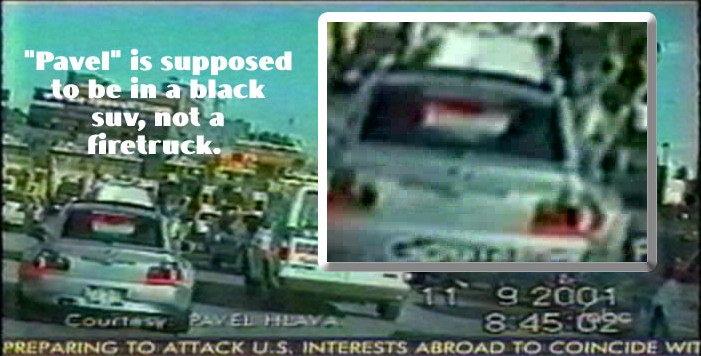 http://thewebfairy.com/911/pavel/reflection1.htm Apparently we’re supposed to believe the red and white “object” in the rear window of the highlighted car is a reflection of the vehicle that Havel is in; it’s not a black SUV, therefore we cannot trust his story. (Go visit the page to see this in motion, though it makes little difference to us.)
(cropped from here) Next, he pointed out the third red brake light visible at the top of the rear window, and suggested this is a likely cause of the red reflection. And finally, he points to the steep angle of the rear window as a sign that any reflection would not be of an object directly behind it.
(original here) Looks like a thorough rebuttal to us, though please visit the Webfairy page, view the Havel video, and make your own mind up. Update: The PhysOrg forum has another post attempting to make the reflection idea stand up here. Keep reading from that post for the response. |
| [Home] [Hijackers] [Foreknowledge] [Stand down] [WTC (demolition)] [WTC (other)] [WTC7 and Silverstein] [Pentagon] [Flight 93] [bin Ladin] [Obstructing Justice] [Afghanistan] [Others] [Investigations, more] [What's New?] |
